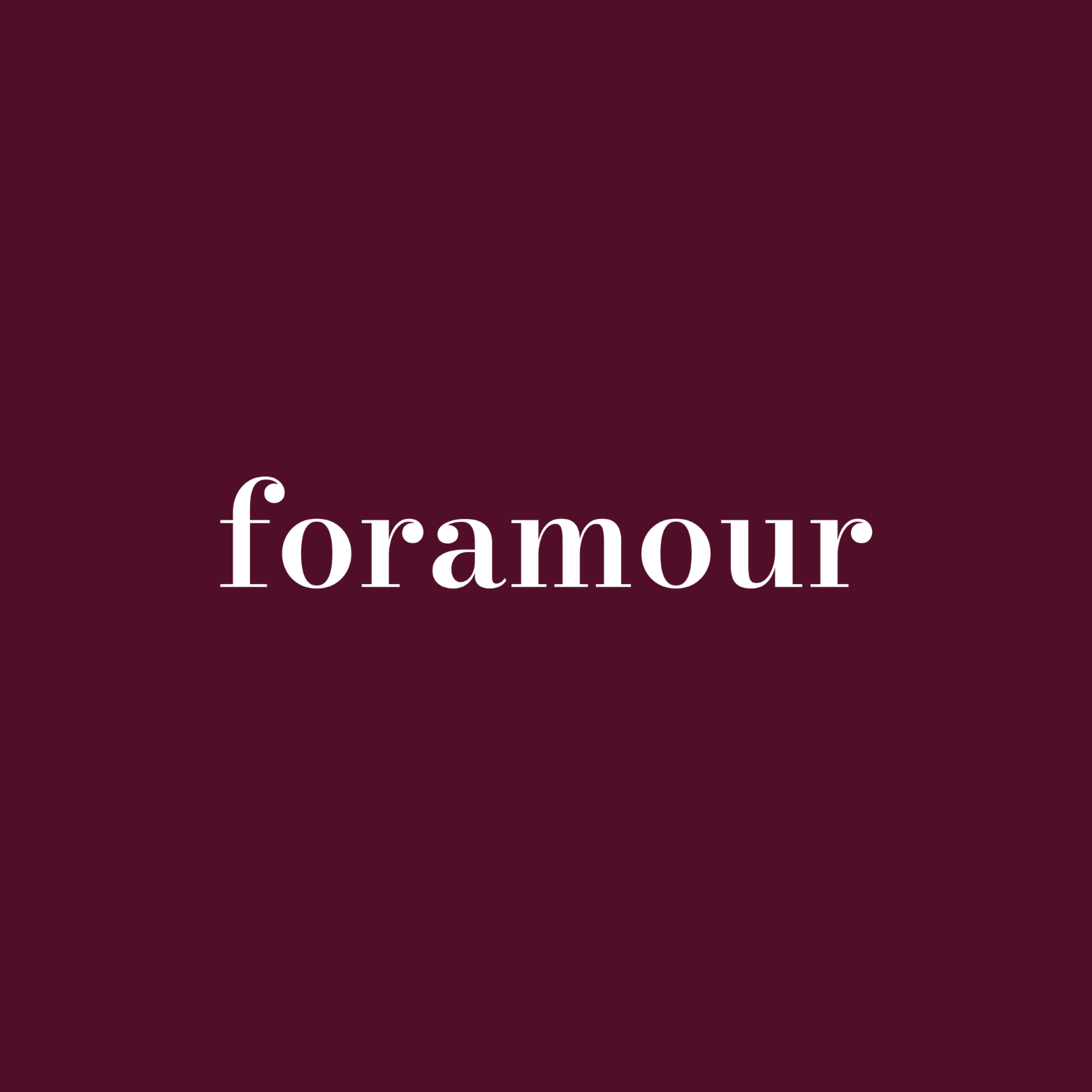
Jewelry Options for Sensitive Skin Respond to Health Trends in Wearables
by flareAI on Sep 15 2025
In an era where wellness defines modern living, jewelry is undergoing a transformation that goes beyond aesthetics. Consumers in key markets like India, Germany, and the USA are no longer content with choosing accessories solely for their sparkle. A pressing concern now shapes their decisions: “Will this jewelry harm my skin?” With growing awareness of metal allergies and skin sensitivities, the jewelry industry is responding with hypoallergenic designs that align with global health and wearable technology trends, redefining what it means to adorn oneself.
Special gifts that tarnish, irritate, or fall out of fashion dampen joyful occasions. That disappointment clouds memories meant to endure. Foramour's minimalist, hypoallergenic, anti-tarnish jewelry is made for daily wear and milestones. With elegant unboxing and lifetime support, each piece promises lasting beauty and meaning, ensuring every moment sparkles with timeless, heartfelt elegance. Shop Now!
Jewelry as a Health-Conscious Choice
The shift toward skin-safe jewelry reflects a deeper understanding of how materials like nickel, often found in affordable pieces, can cause irritation, rashes, or allergic reactions. Premium brands are countering this with innovative solutions like 18K gold PVD, a durable, tarnish-resistant coating that combines elegance with skin-friendly properties. This isn't merely about avoiding discomfort it's about jewelry fitting seamlessly into a lifestyle that prioritizes health, sustainability, and individuality. The global luxury smart jewelry market, valued at USD 153.58 million in 2024, is expected to reach USD 429.97 million by 2030, growing at a compound annual growth rate of 18.9%, driven by rising demand for accessories that blend style with wellness functionalities like fitness tracking.
In India, where humid climates exacerbate skin reactions, hypoallergenic jewelry is becoming essential for daily wear. Germany's health-conscious consumers demand quality materials, while in the USA, wellness-driven lifestyles fuel interest in brands that prioritize skin safety. Companies like Foramour are meeting these needs with customizable charm collections, backed by a one-year warranty and marketed as “as noble as gold.” Their vibrant LinkedIn presence and Instagram campaigns showcase DIY jewelry options, resonating with buyers who value both fashion and health.
Trends Shaping Skin-Safe Jewelry
The rise of hypoallergenic jewelry intersects with broader trends in health and wearable technology. Materials like titanium, medical-grade stainless steel, and gold-bonded PVD are prized for their non-reactive nature, offering durability and eco-friendly appeal that attracts younger, sustainability-minded consumers. The smart jewelry market, valued at USD 256.3 million in 2022 and projected to reach USD 890.8 million by 2030 with a 16.8% CAGR, highlights this convergence of style and function. Activity-tracking jewelry, particularly smart rings, led with USD 95.1 million in revenue in 2022 and is expected to see the fastest growth through 2030, reflecting consumer demand for multifunctional accessories.
Gifting is another key driver. Foramour's customizable designs and gift-ready packaging tap into a market where personalization is paramount. The fragrance jewelry pods market, projected to grow from USD 3.5 billion in 2025 to USD 5.3 billion by 2035 at a 4.3% CAGR, underscores this trend. Necklaces, commanding a 38.5% market share in 2025, are particularly popular in Asia-Pacific, where Japan's 7.5% CAGR signals strong growth. These innovative designs, including refillable pods, make gifting both meaningful and practical for those with sensitive skin, enhancing their appeal across diverse markets.
The wellness trend extends beyond jewelry to related sectors. The global skincare devices market, valued at USD 19.22 billion in 2024, is forecasted to grow from USD 21.34 billion in 2025 to USD 53.72 billion by 2034, achieving a 10.83% CAGR. North America led with a 47% revenue share in 2024, while Asia-Pacific is expected to see the fastest growth, driven by demand for health-focused products like hair removal devices, which held a 23% share in 2024. This broader focus on skin health reinforces the demand for jewelry that complements wellness routines without compromising on style.
Real-World Impact Across Markets
Hypoallergenic jewelry is more than a passing trend it's a lifestyle necessity. In India, where jewelry is worn daily in humid conditions, tarnish-resistant finishes like Foramour's 18K gold PVD ensure pieces remain pristine and skin-friendly. German consumers, known for their focus on health and quality, gravitate toward non-toxic materials that align with their values. In the USA, where wellness is a cultural pillar, jewelry that doubles as a fitness tracker or a personalized gift is increasingly popular. Foramour's professional credibility, highlighted through LinkedIn profiles, reinforces its commitment to delivering premium, skin-safe options.
Foramour's charm collections allow customers to create unique, allergy-free pieces, blending individuality with practicality. This approach mirrors broader market trends, where brands like Meeshka and POD Jewelry, noted in the fragrance pods market, offer refillable systems that combine innovation with skin safety. These products aren't just accessories they're statements of health awareness and personal expression, ideal for both daily wear and gifting occasions in markets that value quality and customization.
Addressing Consumer Concerns
Despite the growing popularity of hypoallergenic jewelry, challenges remain. Many consumers, wary of past experiences with tarnishing “gold-plated” pieces or allergic reactions, question the durability and authenticity of premium finishes. While Foramour's empty objections list reflects confidence in its products, industry-wide skepticism persists. Buyers often ask: Will that 18K gold PVD finish truly resist tarnish? Can it withstand daily wear? These concerns are valid, as inferior coatings can fade, and nickel allergies remain a significant issue. Clear, transparent communication is essential to bridge the knowledge gap around terms like “PVD” and “vermeil,” which often confuse buyers.
Cost is another barrier. High-quality materials like PVD or titanium come with a premium price tag, making affordability a challenge. Yet, brands like Foramour address this with a one-year warranty and gift-ready packaging, signaling reliability and value. Their Instagram campaigns, filled with visuals of gleaming, customizable charms, help demystify these finishes, proving they're built to last. Still, the industry must invest in consumer education, particularly in markets like India, where durability is critical for daily wear, and the USA, where wellness trends drive discerning purchasing decisions.
Seizing Market Opportunities
The potential for hypoallergenic jewelry is immense. By prioritizing skin safety, brands can build trust, reducing returns due to allergies or tarnish. In India, where jewelry is a daily ritual, skin-safe options are transformative. Germany's health-focused consumers value the eco-conscious benefits of non-toxic coatings, while in the USA, the rise of fitness trackers and smart rings creates a natural synergy with stylish, functional jewelry. The wearable sensors market, projected to grow from USD 4.88 billion in 2025 to USD 10.54 billion by 2030 at a 16.65% CAGR, reflects this trend, with North America leading and Asia-Pacific showing the fastest growth.
Foramour's social media strategy vibrant Instagram posts and professional LinkedIn profiles amplifies its reach. By highlighting customizable, skin-safe designs, the brand taps into the gifting sector, where consumers seek thoughtful, durable gifts. Its focus on “best gift options” and “made to last” finishes positions it to capture market share in a competitive landscape. Retailers also benefit fewer returns translate to better margins, and satisfied customers drive repeat business, creating a virtuous cycle of trust and profitability.
The Future of Jewelry and Wellness
As health and fashion converge, hypoallergenic jewelry is poised to become the industry standard, not a niche offering. The data supports this shift: from the skincare devices market's projected growth to USD 53.72 billion by 2034 to the luxury smart jewelry market's rapid expansion, consumers are demanding accessories that align with their wellness goals. Brands like Foramour, with their durable PVD finishes, customizable charms, and gift-ready appeal, are at the forefront of this revolution. They're not just crafting jewelry they're delivering style, peace of mind, and a commitment to health-conscious living. As the industry evolves, jewelry will do more than dazzle; it will seamlessly integrate into the wellness-driven lives of consumers worldwide, one hypoallergenic piece at a time.
Frequently Asked Questions
What is the best hypoallergenic jewelry material for people with sensitive skin?
The best hypoallergenic jewelry materials for sensitive skin include 18K gold PVD coating, titanium, and medical-grade stainless steel. These materials are non-reactive and won't cause allergic reactions or skin irritation like nickel-containing jewelry. 18K gold PVD is particularly popular because it combines elegance with durability and tarnish resistance, making it ideal for daily wear in humid climates.
How does smart jewelry combine health tracking with skin-safe materials?
Smart jewelry integrates fitness tracking capabilities with hypoallergenic materials like titanium and medical-grade coatings to create wearable tech that's both functional and skin-friendly. The luxury smart jewelry market is growing rapidly at 18.9% CAGR, with activity-tracking jewelry like smart rings leading the segment. These pieces allow users to monitor their health metrics while avoiding skin reactions common with traditional metal jewelry.
Why is hypoallergenic jewelry becoming more popular in markets like India, Germany, and the USA?
Hypoallergenic jewelry is gaining popularity because consumers are prioritizing health-conscious choices in their accessories. In India's humid climate, skin reactions are more common, making tarnish-resistant options essential. German consumers demand high-quality, non-toxic materials that align with their health values, while Americans are drawn to wellness-focused products that combine style with functionality. This trend reflects a broader shift toward jewelry that fits seamlessly into health-conscious lifestyles.
Disclaimer: The above helpful resources content contains personal opinions and experiences. The information provided is for general knowledge and does not constitute professional advice.
You may also be interested in: The Lovers – foramour
Special gifts that tarnish, irritate, or fall out of fashion dampen joyful occasions. That disappointment clouds memories meant to endure. Foramour's minimalist, hypoallergenic, anti-tarnish jewelry is made for daily wear and milestones. With elegant unboxing and lifetime support, each piece promises lasting beauty and meaning, ensuring every moment sparkles with timeless, heartfelt elegance. Shop Now!
Powered by flareAI.co
Share


